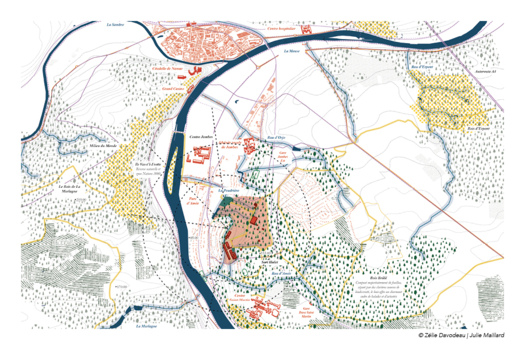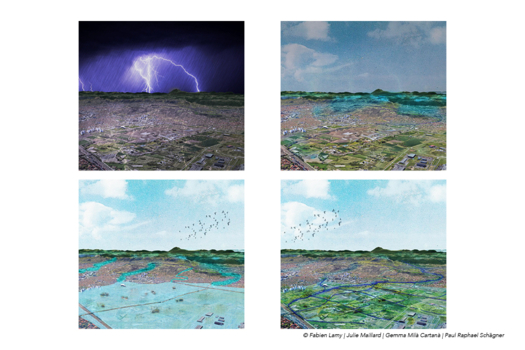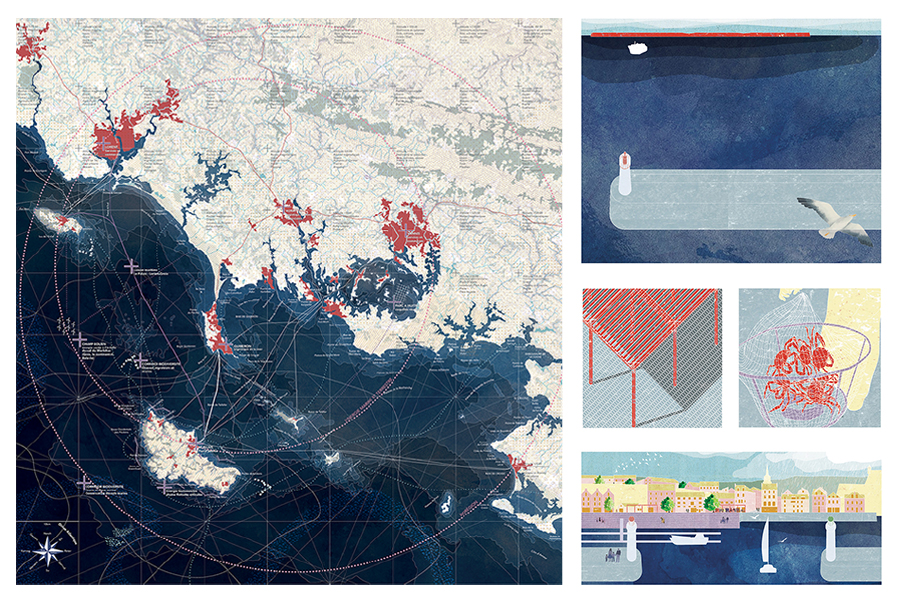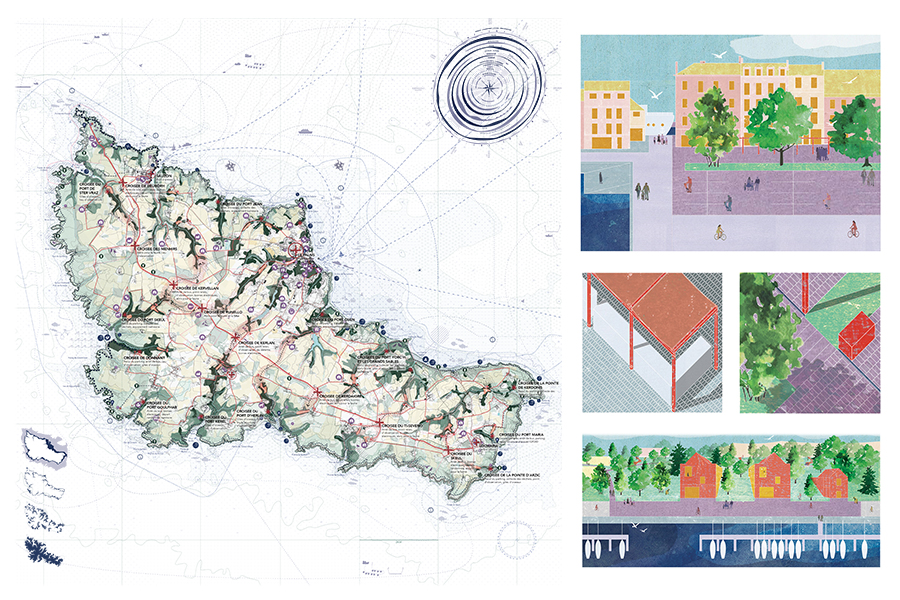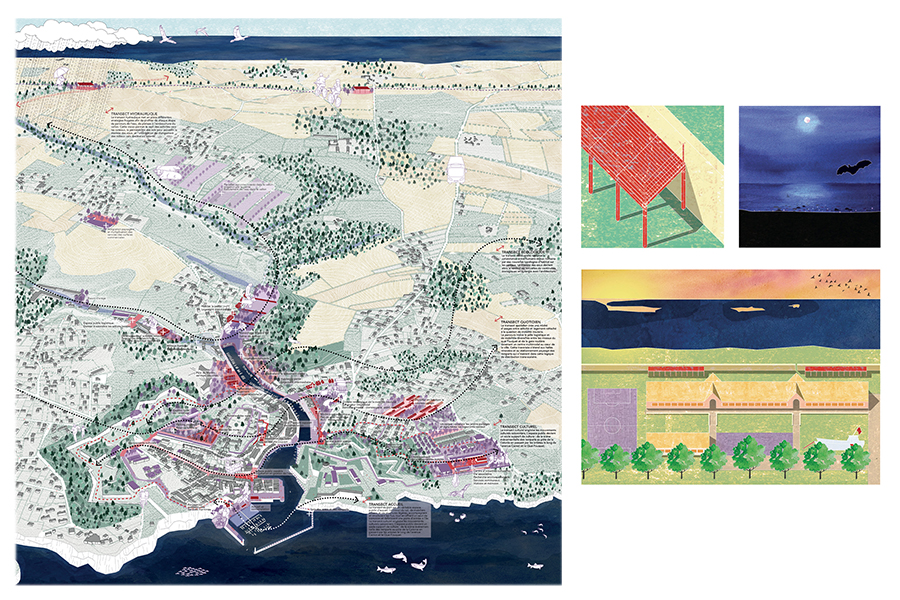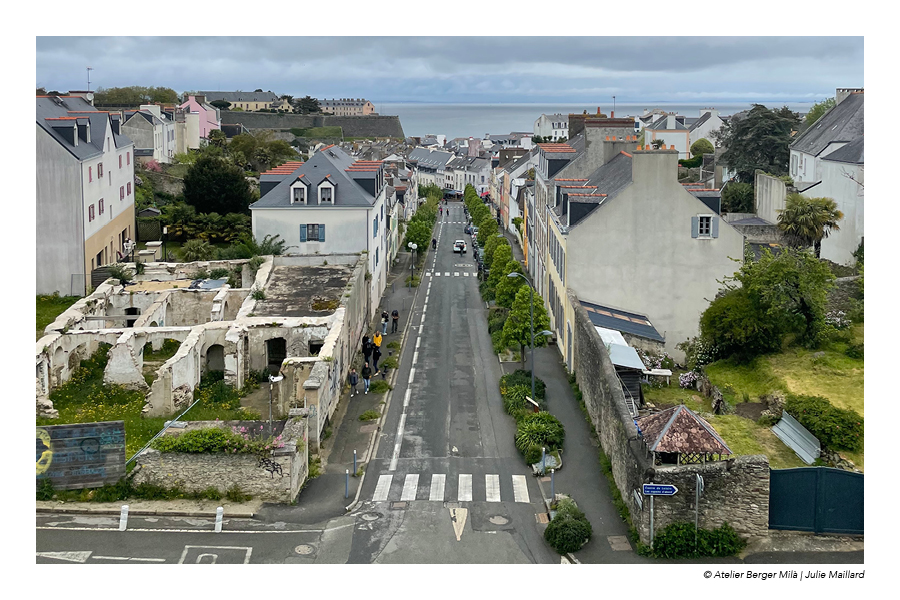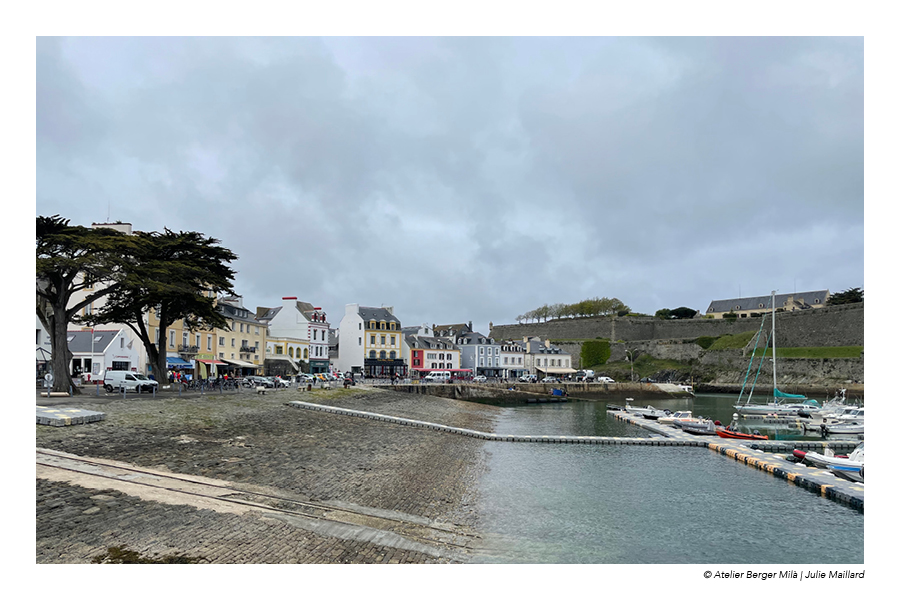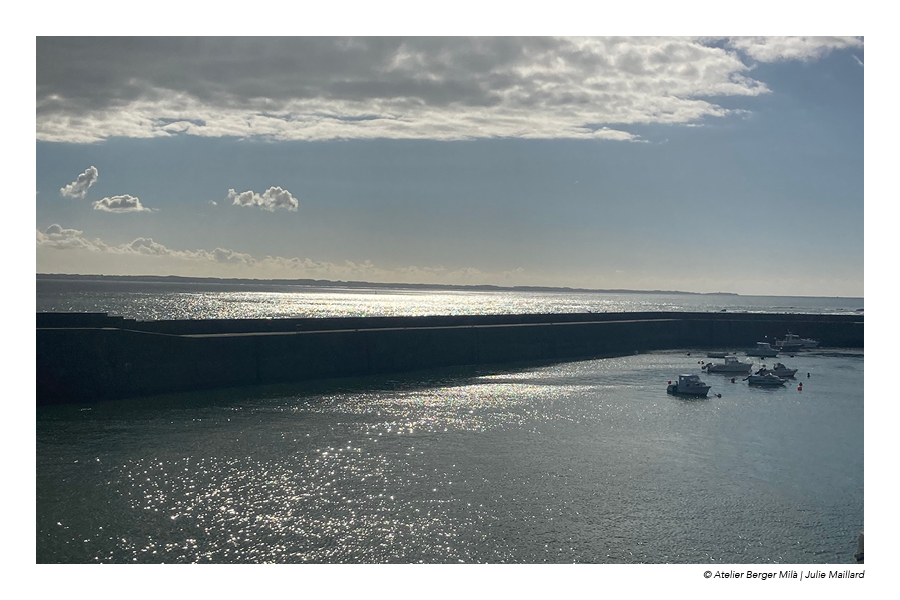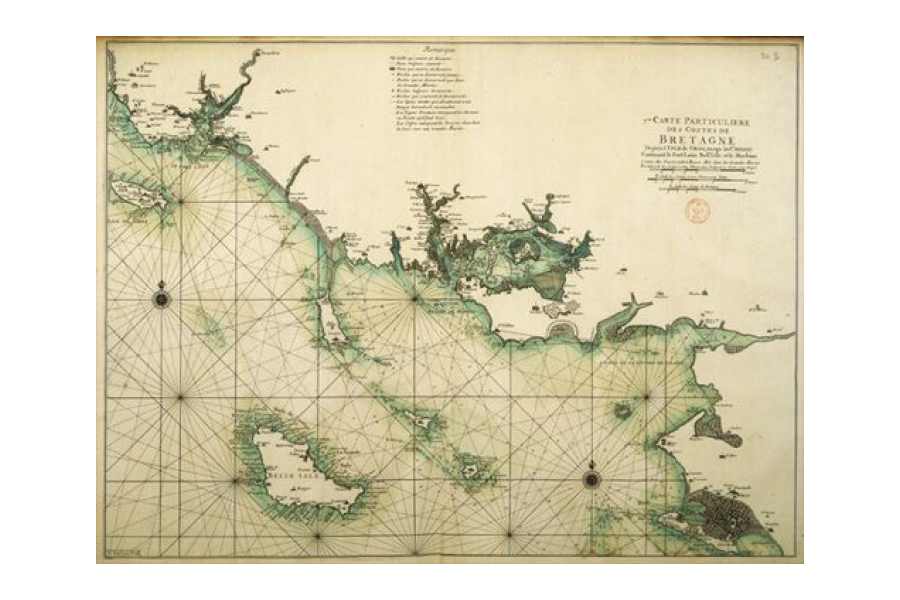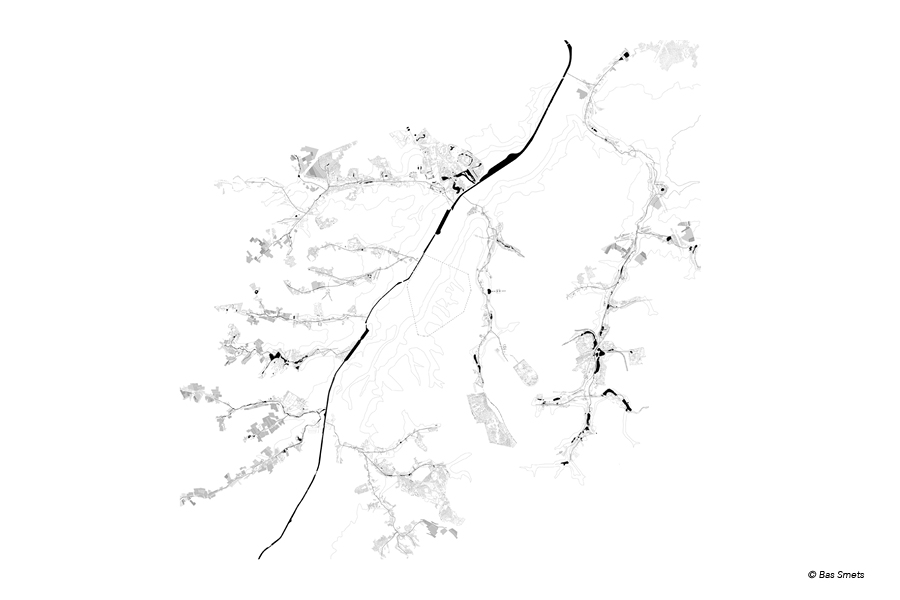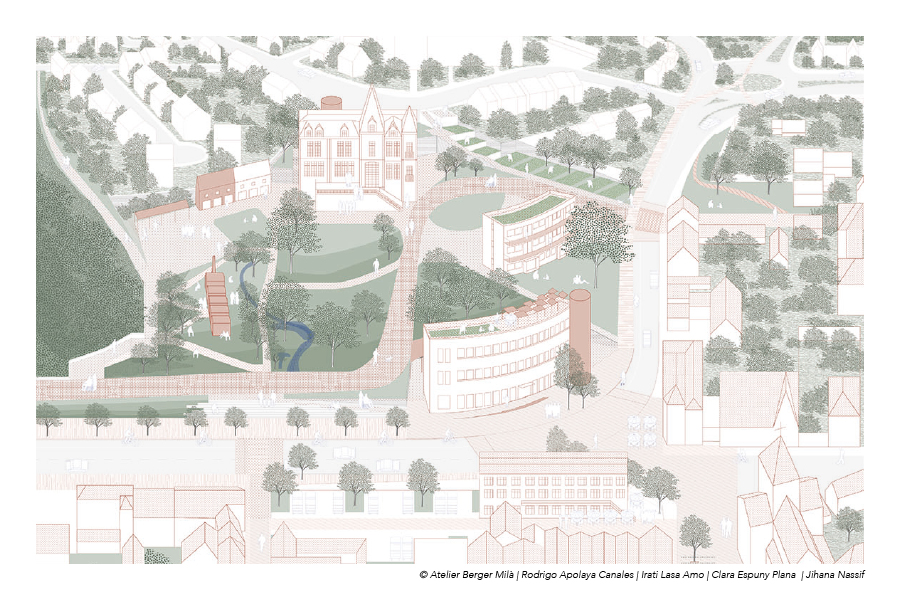Les Traversées
Le Palais (FR) - Winner

TEAM PORTRAIT
VIDEO (by the team)
INTERVIEW
Click on the images to enlarge
1. How do you define the main issue of your project in relation with the theme “Living Cities Imagining architecture taking care of the milieus”? And in which way do you think your project can contribute to an ecological and/or social evolution?
We are intrigued by the concept of cultural landscape to unveil the identity of environments. Through this comprehensive approach, the project becomes “bien commun”, bringing together the stakeholders of the territory, both human and non-human. The project aims to create transects—imaginary lines running through a geographic area—to connect the varied mosaic of landscapes across three scales: the bioregion, the island, and the town of Le Palais. This approach provides a meaningful framework for observation, understanding, and impactful intervention. In consequence, it presents new possibilities for improving territorial coherence.
2. How did the issues of your design and the questions raised by the site mutation meet?
The island offers abundant opportunities, but these are currently hindered due to the distinct landscapes evolving independently: the ocean, the coastline, the vallons, and the plateau. The project aims to analyse and comprehend existing elements in order to foster new connections between them, linking various themes across different scales, such as human and non-human mobility, culture, landscape, topography, water features, construction, inhabitants, and materials. These new relations promote the enhancing landscapes using existing resources. On the scale of Le Palais, designated transects, each serving specific purposes on the island, will strengthen the cohesion among the city's activities.
PROJECT:



Our team is driven by a trans-scale reflection, where architecture and landscape design serve to connect living entities to their environment. This method has allowed us to win three Europan competitions. Our expertise has been showcased in urban design competitions, such as Europan, where we have engaged in a variety of projects such as riverbank developments, new social housing development, and smaller-scale garden designs around historical buildings, revegetalisation of public spaces, soil revitalisation and deconstruction and re-using. Inspired by traditional techniques, we actively participate in collaborative practices with experts. This collaborative approach extends not only to local actors in France but also internationally, drawing inspiration from contemporary practices over the world.
SITE:



The recent global health and environmental crisis has demonstrated the possibility of swift responses to the climate emergency. Quick and cost-effective measures can significantly impact insular life. However, some actions may be subject to constraints such as land ownership, institutional agreements, validations, or technical issues, leading to a longer implementation timeline. These situations are not prerequisites for project realization, which relies on controlled spaces and leverages timely action outcomes. The rapid realization of public space and building transformations aims for simplicity and sustainability. For changes that require more time, the previous actions are used as experiments or are gradually implemented in alignment with the ongoing development of the city.
REFERENCES:



Corentin Berger, Gemma Milà and Julie Maillard met at the Europan 16 Intersessions Forum in Clermont Ferrand in fall 2022. This workshop and forum brought us to discuss about contemporary urban planning, landscape and architecture approaches and to understand how complementary they are. During this week, Julie and Gemma had been in the same workshop team. The project, in Clermont-Ferrand Métropole was a reflection about the Bédat valley. It allowed them to improve their skills working together: from theorical topics research to develop new illustration methods. Gemma is a Spanish architect with a Heritage landscape master in France, Julie is a French architect with a DSA in urban planning and a Landscape Master, finally Corentin Berger is a French architect and also designer. This experience reinforced their belief in the beneficial aspects of a transversal scale and holistic vision for addressing urban planning and architecture projects. This competition for Belle-île-en-mer was the opportunity to put their skills and sensibilities together, to push forward this reflection, with the contribution of two new team members of Atelier Berger Mila, Elsa and Esther.
6. How could this prize help you in your professional career?
Our participation in the Europan events like the Intersessions Forum connect us with fellow internationals architects and the Europan organization team. Being part of the Europan ecosystem and the newly established contacts and relationships within the team are valuable for advancing our architectural practice and reflexion. At the same time, the real commission that will come from the municipality will allow us to achieve a public command that is very challenging as young architecture and landscape studios due to the limitations in having references for participating in public competitions.
TEAM IDENTITY
Legal status:
Team name:
Average age of the associates: 34 years old
Has your team, together or separately, already conceived or implemented some projects and/or won any competition? if so, which ones?
We’ve done the Europan 16 workshop together in Clermont Ferrand.
The whole team has already won Europan :
- Atelier Berger Milà had won Europan 15 in Barcelona site (ES) and Europan 16 in Quimper site (FR) in collaboration with different teams.
- Julie Maillard has won with another team Europan 16 in Namur (BE) site with the project : Le sol, le roseau et le cycliste
Our team is convinced that architectural and urban practices have to be improved by research. That double approach allows Julie Maillard to won the “Faire” architectural research incubator in Pavillon de l’Arsenal in Paris and Atelier Berger Milà to won 100 social housing in Villejuif, Paris.
WORKS:

